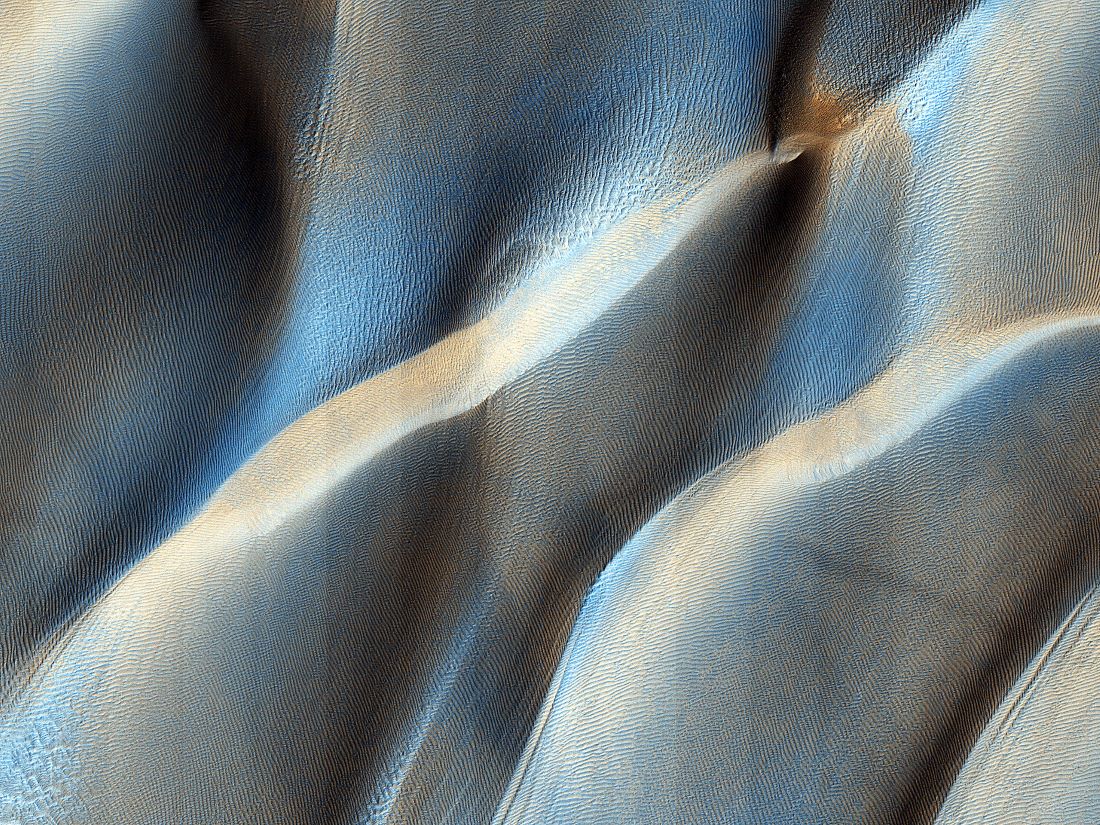NASA's HiRISE camera captures spectacular colliding sand dunes on Mars

NASA's High-Resolution Imaging Science Experiment (HiRISE) camera has captured this image of colliding sand dunes in the Aonia Terra region of Mars, revealing a complex interplay of winds and topographic features that have shaped the dune field into a variety of intriguing morphologies.
This dune field showcases complex shapes, indicating the ever-changing directions of prevailing winds over time or from one location to another. Many of the dune fields in this region of Mars are found nestled against topographic obstacles like crater rims. The placement of the dunes within impact craters offers insights into the average regional winds, while smaller details such as slip-face orientations and superposed ripples are influenced by present-day local winds.
The outlying dunes in this HiRISE image appear as elegant arc-shaped formations formed by southerly winds, known as barchans. However, as the dunes migrated northward, they encountered a cluster of dunes compressed against a confining scarp. This encounter led to a fascinating transformation as many of the barchans scaled the upwind (stoss) slope of the adjacent row of dunes. The evidence of this migration can be seen in the avalanches that occurred on the downwind (slip) face of the dunes. The collision between the migrating dunes significantly altered their morphology, resulting in star-shaped dunes with multiple arms that gradually took on a linear appearance as their horns were modified.
HiPOD: Colliding Sand Dunes in Aonia TerraThese complex shapes often indicate that the dominating winds change direction, either over time or from one location to the next. https://t.co/rtfPIEPfMINASA/JPL-Caltech/UArizona#Mars #science #NASA pic.twitter.com/vjZtBmIqpw
— HiRISE: Beautiful Mars (NASA) (@HiRISE) June 11, 2023
Another captivating feature captured in the image is the presence of faint dark tracks from dust devils picking up a thin layer of dust from the dunes, leaving behind barely perceptible tracks. The faintness of these tracks suggests that the dunes are actively shifting sand grains, which effectively cleanses much of the settled dust from their surfaces.
As NASA continues to explore our celestial neighbour and unveil its mysteries, detailed images like this contribute to our understanding of the Martian atmosphere, geological processes, and the potential influence of these factors on the planet's habitability.










